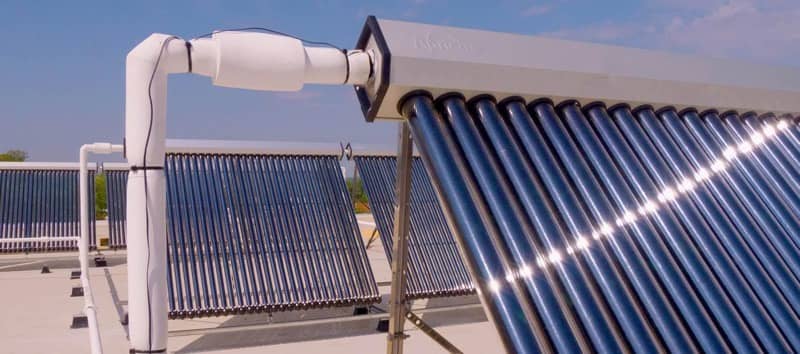 With the need for sustainable energy ever growing, some people turn to solar panels as a potential solution. The overall impact of these solar array systems needs to be taken into consideration; this includes more than just potential cost savings. If the proper steps are not taken, solar panels can negatively impact the performance of your roofing system as well as your wallet.
With the need for sustainable energy ever growing, some people turn to solar panels as a potential solution. The overall impact of these solar array systems needs to be taken into consideration; this includes more than just potential cost savings. If the proper steps are not taken, solar panels can negatively impact the performance of your roofing system as well as your wallet.
1. Roof’s Current Condition and Return on Investment (ROI)
As solar panels add a considerable amount of weight to a roofing system, it is important that the current condition of your roof is known. Your first step in the process should be to schedule an inspection and understand the expected lifespan of your current roof. If it’s less than 20 years it’s probably best to forgo solar panels until you replace your roofing system. This is due to the fact that a return on investment may not be seen until at least 20 years after installation.
Many variables come into play such as location and amount of clear days. A property in Phoenix, Arizona would have a quicker ROI than a property in Seattle Washington. Other variables such as utility policies and pricing, tax incentives and rebate programs, and other government initiatives come into play as well, just to name a few.
Generally speaking, it’s advantageous if solar panels are considered during the initial construction plans for a facility. Although solar panels are a rather large upfront cost, you can ensure that you do see a return on investment, as your brand new roofing system should last anywhere from 15 - 30 years depending on the type of roofing membrane you choose.
2. Penetrations
Solar panels are commonly installed through the use of bolting mounts or some other penetrating technique that will need to be sealed properly to avoid premature roof failure. This is an extremely important point to consider, as you don’t want moisture infiltrating the roofing system and compromising the roofing components.
A potential solution to this problem, depending on your roofing system and solar panels, is to utilize a ballasted mounting system. The fewer the penetrations in your roofing system, the better. Again though, you must be mindful of the extra weight and how that weight might put stress on your roofing system, and whether or not your building is designed for the extra load.
3. Maintenance
Just like your roofing system, your solar panel system will require routine maintenance. In order for both systems to perform the way you need them to, you’ll have to invest some capital into their upkeep. Your maintenance options typically depend on how you purchase your solar array system. Some solar panels come with a monitoring system of sorts that will alert you to potential problems. Others do not, in which case more manual monitoring will need to occur. Some roofing contractors have the expertise to inspect both your roofing system and solar array system, so check with your peers for their best recommendations before starting on your project.
Are there any other initial considerations you make prior to installing a solar array system? Share it with us in the comments.
-1.png?width=500&height=271&name=FiberTite_Only%20(500px%20wide)-1.png)


-1.png)